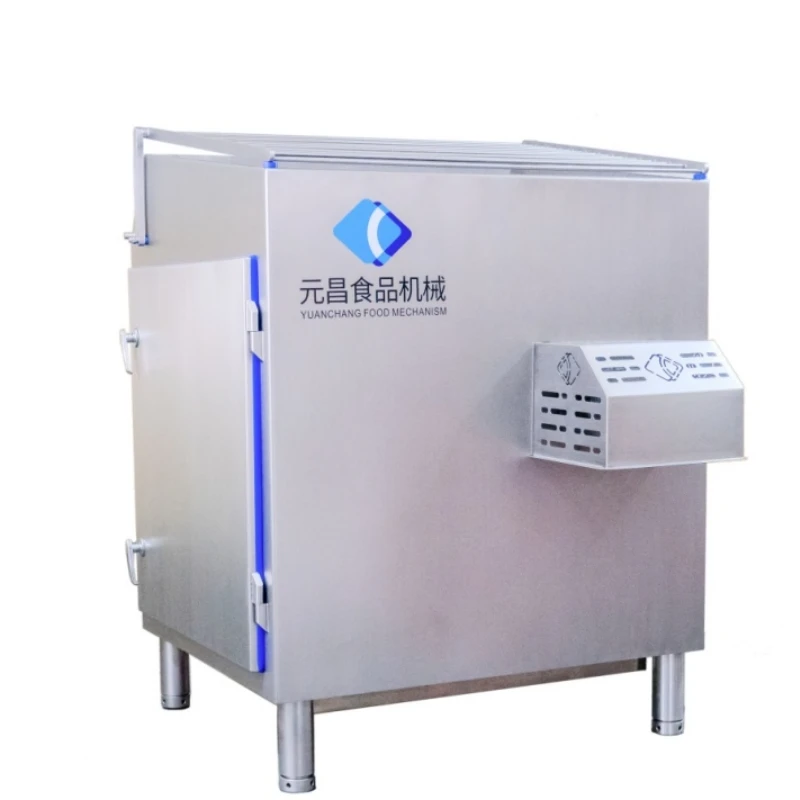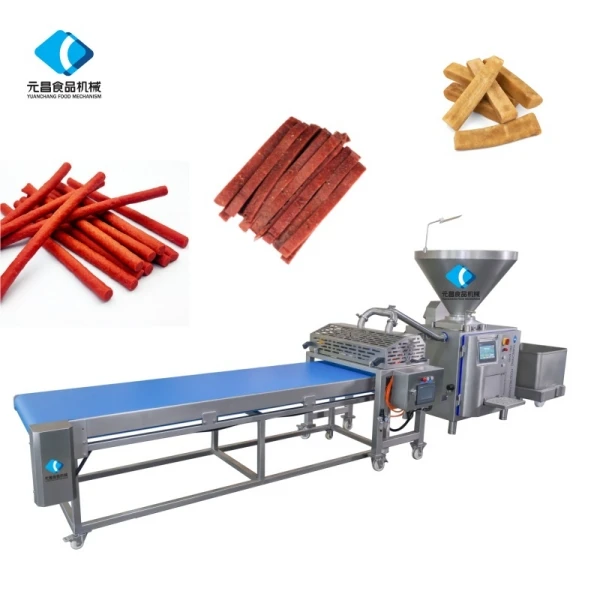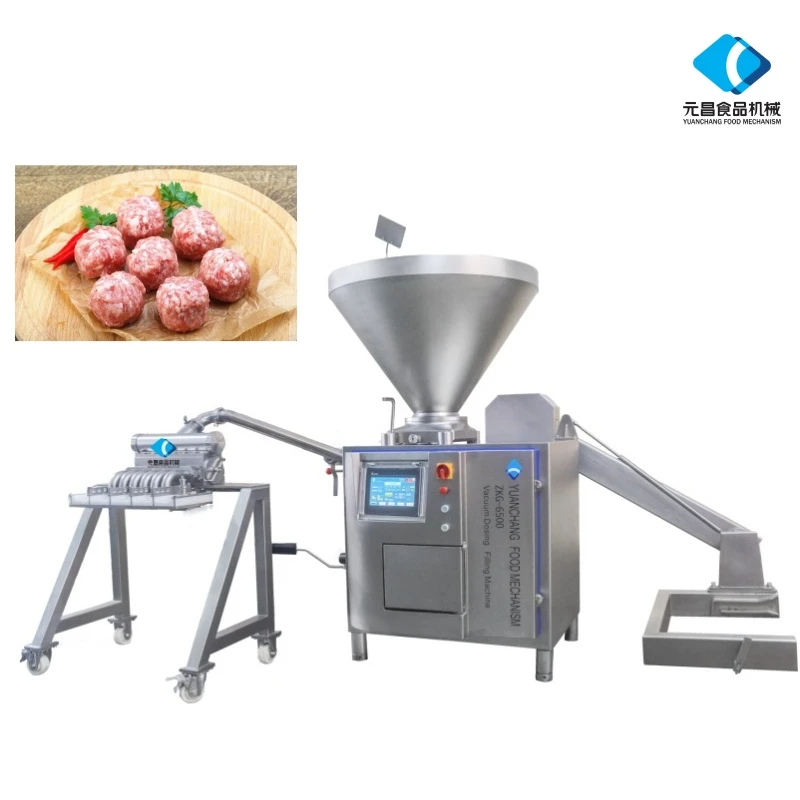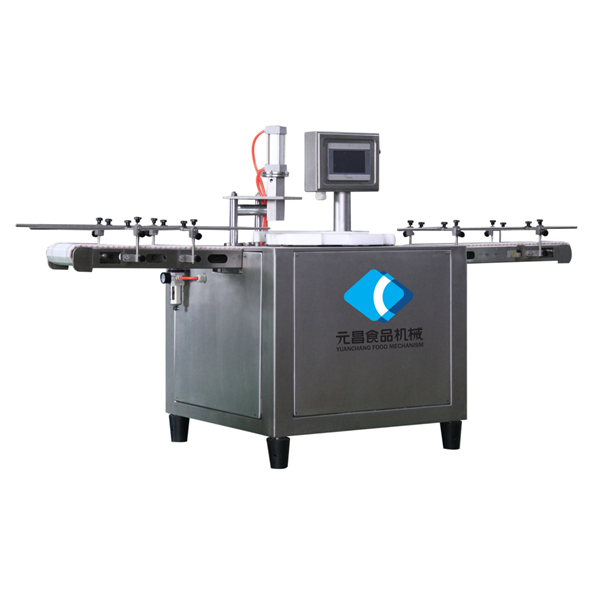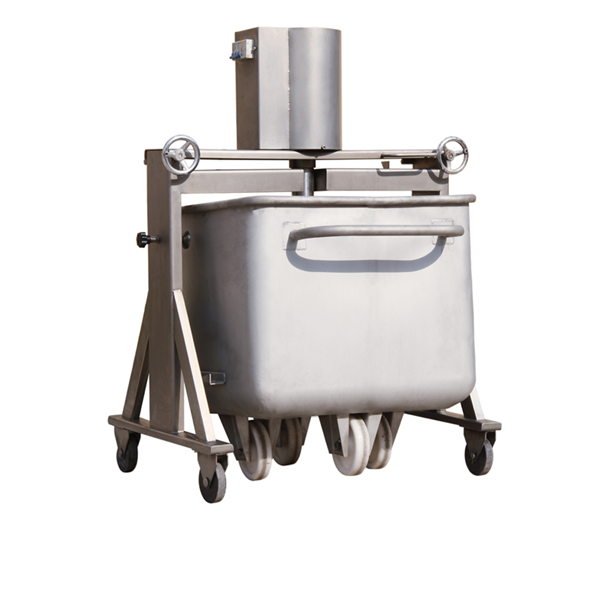Meat Vacuum Mixer: Enhanced Flavor & Tenderness Processing
In the dynamic landscape of modern food processing, achieving unparalleled product quality, consistency, and extended shelf life is paramount. For meat, poultry, and seafood processors, the ability to uniformly blend ingredients while optimizing texture and flavor is a critical differentiator. This is where the meat vacuum mixer emerges as an indispensable piece of equipment, revolutionizing the way food products are prepared.
This comprehensive guide delves deep into the world of vacuum mixing technology, specifically focusing on the advanced capabilities of the Meat Vacuum Mixer. We will explore its core functionalities, technological advantages, intricate manufacturing processes, and diverse applications, providing insights that underline its significance in elevating industry standards. By examining industry trends, technical specifications, and real-world benefits, we aim to provide a holistic understanding for food processing professionals seeking to optimize their operations.
Industry Trends and the Rise of Advanced Mixing Solutions
The global food processing industry is undergoing a significant transformation driven by several key trends:
- Increasing Demand for High-Quality Processed Meats: Consumers increasingly seek products with superior texture, extended freshness, and enhanced nutritional profiles.
- Food Safety and Hygiene Standards: Stringent regulations (e.g., HACCP, USDA, FDA) demand equipment that ensures maximum hygiene, ease of cleaning, and reduced risk of contamination.
- Automation and Efficiency: Labor costs and the need for higher throughput are pushing manufacturers towards automated solutions that reduce manual intervention and optimize production cycles.
- Clean Label and Ingredient Optimization: Processors are striving to reduce additives and maximize the natural binding and textural properties of ingredients, making precise mixing crucial.
- Growth of Plant-Based Alternatives: The rise of plant-based protein products requires mixing technologies capable of handling diverse viscosities and ensuring uniform texture in novel formulations.
Traditional mixers often incorporate air into the product during blending, leading to oxidation, discoloration, and a spongy texture. This also shortens shelf life and can negatively impact flavor. The emergence of vacuum technology in mixing addresses these challenges directly. A meat vacuum mixer operates under reduced atmospheric pressure, pulling air out of the product mixture. This innovative approach prevents air pockets, preserves natural colors, enhances protein extraction, and improves the overall binding and texture of the final product. It is no longer just about blending; it's about engineering the perfect texture and extending product viability, making vacuum mixers a cornerstone of modern, efficient, and quality-driven food production.
Product Deep Dive: The Meat Vacuum Mixer
The Meat Vacuum Mixer is an advanced industrial blending machine specifically designed for the thorough and gentle mixing of meat products, poultry, seafood, and even plant-based protein mixtures under vacuum conditions. Its core function is to ensure homogeneous distribution of ingredients, spices, and brines, while simultaneously removing entrapped air.
Manufacturing Process of the Meat Vacuum Mixer: Precision Engineering for Food Safety
The creation of a high-quality meat vacuum mixer is a testament to precision engineering, robust material selection, and rigorous quality control. The process ensures not only operational efficiency but also strict adherence to international food safety and hygiene standards. Here's a detailed breakdown of the typical manufacturing workflow:
Material Selection and Preparation
The primary material for all food-contact surfaces is high-grade stainless steel, typically SS304 or SS316L. SS316L is preferred for its superior corrosion resistance, especially in environments involving salts, acids, or chlorinated compounds found in brines and cleaning agents. Sheets and profiles are precisely cut using advanced laser cutting or plasma cutting machines to minimize material waste and ensure accurate dimensions.
Component Fabrication (Tank, Paddles, Frame)
- Mixing Tank: Stainless steel sheets are precisely bent and rolled into the desired tank shape. This critical component is often double-jacketed for temperature control (heating/cooling).
- Mixing Paddles/Shafts: The unique design of the mixing paddles (e.g., single-shaft, double-shaft, Z-arm, helical) is crucial for optimal mixing. These are fabricated with extreme precision, often utilizing CNC machining for complex geometries, ensuring efficient product turnover and gentle handling. The shafts are machined to tight tolerances for smooth rotation and proper sealing.
- Structural Frame: The robust frame, also typically stainless steel, is fabricated to support the heavy mixing tank, motor, and vacuum system, providing stability and durability.
Welding and Surface Treatment
All welding (primarily TIG - Tungsten Inert Gas welding) is performed by certified welders to achieve smooth, crevice-free joints. This is critical for preventing bacterial growth and ensuring easy cleaning, meeting standards like those set by NSF/ANSI 3-A Sanitary Standards. Post-welding, surfaces undergo meticulous grinding, polishing (to a Ra value typically below 0.8 µm), and passivation to enhance corrosion resistance and hygiene, leaving a mirror-like finish on internal surfaces.
Assembly of Sub-systems
- Mechanical Assembly: The mixing paddles, shafts, gearboxes, and motors are precisely assembled into the main tank. High-quality seals (e.g., mechanical seals, labyrinth seals) are installed to maintain vacuum integrity and prevent product leakage.
- Vacuum System Integration: The vacuum pump, vacuum tank, filters, and necessary piping are integrated. Vacuum levels are rigorously tested to ensure they can consistently achieve and maintain the desired negative pressure.
- Control System Installation: PLC (Programmable Logic Controller) units, HMI (Human-Machine Interface) touchscreens, sensors, and electrical components are installed and wired. This forms the brain of the mixer, allowing for precise control of mixing speed, direction, vacuum level, and cycle times.
Testing and Quality Assurance
Each meat vacuum mixer undergoes extensive testing:
- Leak Testing: All vacuum-sealed components and the mixing tank are thoroughly tested for leaks to ensure perfect vacuum retention.
- Functional Testing: The mixer is run through various cycles, speeds, and vacuum levels to verify all mechanical and electrical components operate as designed.
- Performance Testing: Using test batches (sometimes even actual product surrogates), the mixer's ability to achieve homogeneous mixing, desired texture, and efficient vacuum removal is validated.
- Safety Compliance: Electrical safety, emergency stop functions, and interlocks are checked to comply with standards like CE or UL.
Final Inspection and Certification
Before shipment, a final visual inspection is conducted. Documentation including operation manuals, maintenance guides, spare parts lists, and material certificates (e.g., 3-A Sanitary Standards, ISO 9001 for manufacturing quality) are prepared. Adherence to standards like ANSI (American National Standards Institute) for general industrial practices and specific food industry regulations like USDA guidelines for sanitary design are confirmed.
The meticulous manufacturing process ensures that each meat vacuum mixer is not just a machine, but a precision instrument designed for longevity (typically 10-15 years with proper maintenance), optimal performance, and uncompromising food safety within the applicable industries of meat processing, poultry, seafood, and prepared foods. Its robust construction and adherence to standards like ISO 9001 for manufacturing quality guarantee a reliable asset in any food production line, offering advantages such as reduced product loss and enhanced hygiene.
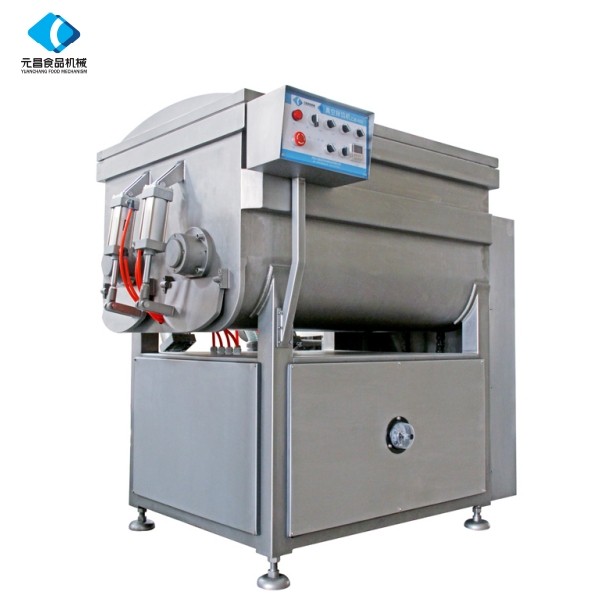
High-precision components of a Meat Vacuum Mixer, showcasing robust engineering for durability.
Technical Parameters and Specifications of Meat Vacuum Mixer
Understanding the technical specifications of a meat vacuum mixer is crucial for selecting the right model to meet specific production needs. Key parameters directly influence efficiency, product quality, and operational costs. Here's a typical range of specifications you would encounter for industrial-grade units:
| Parameter | Typical Range/Description | Benefits/Impact on Production |
|---|---|---|
| Capacity (Working Volume) | 200 L to 3000 L (or 100 kg to 1500 kg batch size) | Determines throughput; larger capacity suits high-volume production. Efficiency scaled to batch size. |
| Motor Power | 5 kW to 45 kW (Varies with capacity) | Indicates mixing capability and energy consumption. Sufficient power ensures effective blending of dense products. |
| Mixing Speed | Variable, typically 5-50 RPM (Programmable) | Adjustable speed for different product types and desired texture (e.g., gentle for delicate products, higher for tough blends). |
| Vacuum Degree | -0.08 MPa to -0.095 MPa (approx. 600-712 mmHg) | Critical for effective air removal. Higher vacuum degree leads to better product quality, color, and shelf life. |
| Material Construction | Food-grade Stainless Steel (SS304/SS316L) for all contact parts | Ensures hygiene, corrosion resistance, and compliance with food safety regulations (e.g., FDA, USDA). Longevity. |
| Control System | PLC (Programmable Logic Controller) with HMI (Touchscreen) | Enables precise control, recipe management, automation, fault diagnosis, and data logging for consistent quality. |
| Mixing Paddles | Single/Double Shaft, Z-Arm, Helical, Paddle (Customizable) | Optimized for specific product types (e.g., gentle tumbling, aggressive kneading). Affects mixing efficiency and product integrity. |
| Temperature Control | Optional Jacket for Heating/Cooling | Maintains optimal product temperature during mixing, crucial for product consistency, safety, and curing processes. |
| Dimensions (L x W x H) | Varies significantly with capacity (e.g., 200L: ~1800x1000x1500mm) | Important for facility layout and installation planning. |
| Weight | Varies with capacity (e.g., 200L: ~800 kg; 1000L: ~2500 kg) | Consideration for factory floor loading capacity and transport. |
| Power Supply | 3-Phase Industrial Power (e.g., 380V/50Hz, 480V/60Hz) | Compatibility with local electrical infrastructure. |
These parameters highlight the sophisticated engineering behind the meat vacuum mixer, demonstrating its capacity for precise control, high efficiency, and adherence to the strictest industry standards. The choice of SS316L, for instance, specifically addresses the corrosive nature of brines and cleaning agents used in meat processing, significantly extending the machine's service life and maintaining hygiene.
Versatile Application Scenarios of Meat Vacuum Mixer
The versatility of the meat vacuum mixer extends across a wide array of food processing sectors, making it a cornerstone for manufacturers prioritizing product quality and efficiency. Its ability to create a consistent, air-free blend under varying conditions makes it indispensable in:
- Processed Meats: Ideal for producing sausages, hams, bacon, deli meats, and meat patties. It ensures uniform distribution of spices, marinades, and binders, improving texture, sliceability, and reducing purge.
- Poultry Products: Enhances the marination and tumbling of chicken and turkey parts, leading to more tender and juicy products with better flavor absorption and reduced cook loss.
- Seafood Processing: Used for mixing fish fillets, shrimp, and other seafood with marinades or binders for products like fish cakes, surimi, or ready-to-cook seafood meals, improving texture and reducing drip loss.
- Plant-Based Proteins: Critical for achieving desired texture and consistency in plant-based meat alternatives, where the binding of various proteins, starches, and fibers is crucial for mimicry of animal products.
- Pet Food Production: Ensures thorough mixing of raw ingredients for wet pet food, contributing to consistent quality and nutritional value.
- Ready Meals and Deli Salads: For recipes requiring the uniform distribution of various ingredients, including vegetables, sauces, and proteins, minimizing damage to delicate components.

A Meat Vacuum Mixer seamlessly integrated into a modern food processing line, enhancing operational efficiency.
Unmatched Technical Advantages of Vacuum Mixing
The meat vacuum mixer offers a distinct competitive edge over traditional atmospheric mixers, translating directly into superior product quality and operational savings. These advantages are rooted in the fundamental principle of vacuum processing:
- Superior Product Quality & Consistency:
- Improved Texture and Bind: Vacuum conditions facilitate better protein extraction (myofibrillar protein), leading to enhanced binding of meat particles. This results in a firmer, more cohesive product with a desirable 'bite' and reduced crumbling during slicing.
- Enhanced Color Stability: By removing oxygen, the mixer prevents oxidation, preserving the natural color of meat and preventing undesirable browning or graying. This ensures visually appealing products for consumers.
- Reduced Air Pockets: Eliminating trapped air prevents unsightly air pockets or spongy textures, leading to a denser, more uniform product with fewer voids. This is crucial for sliceable products.
- Extended Shelf Life:
- Reduced Oxidation: Oxygen is a primary cause of spoilage. By minimizing its presence in the product, the meat vacuum mixer significantly slows down oxidative rancidity and microbial growth, extending the product's freshness and shelf life.
- Minimized Microbial Contamination: While not sterilizing, the vacuum environment can inhibit the growth of certain aerobic spoilage organisms, contributing to safer food.
- Optimized Marinade/Brine Absorption:
- Faster & Deeper Penetration: The vacuum process opens up the meat fibers, allowing marinades, brines, and spices to penetrate more deeply and rapidly into the product. This leads to more efficient flavor absorption and reduced processing times.
- Increased Yield: Better absorption translates to higher product yield, as more liquid is retained within the meat structure, directly impacting profitability.
- Operational Efficiency and Cost Savings:
- Faster Processing Cycles: Enhanced absorption and mixing efficiency can shorten overall batch times, increasing daily production capacity.
- Reduced Product Waste: Improved binding and texture lead to less product breakage during processing and packaging, minimizing waste.
- Energy Efficiency: Modern vacuum pumps and efficient motor designs contribute to energy savings compared to less optimized systems.
- Enhanced Hygiene and Cleanability:
- Designed with smooth, crevice-free stainless steel surfaces and often featuring CIP (Clean-In-Place) capabilities, these mixers are exceptionally easy to clean and sanitize, reducing downtime and ensuring compliance with stringent food safety standards like HACCP.
These combined advantages position the meat vacuum mixer as a strategic investment for any food processor aiming to achieve premium product quality, operational excellence, and a strong competitive standing in the market.
Choosing the Right Partner: Manufacturer Comparison
Selecting a meat vacuum mixer manufacturer goes beyond just comparing technical specifications. It involves evaluating experience, commitment to quality, and after-sales support. While many manufacturers exist, distinguishing factors include:
- Expertise and Industry Focus: A manufacturer with deep specialization in meat processing machinery, like YC Meat Mech, understands the unique challenges and requirements of this sector, ensuring their equipment is optimally designed for the application.
- Material Quality & Craftsmanship: Look for manufacturers who prioritize the use of certified food-grade stainless steel (SS304/316L) and demonstrate superior welding and finishing techniques. This directly impacts hygiene, durability, and service life.
- Technological Innovation: Leading manufacturers continuously invest in R&D, offering advanced features such as intuitive PLC/HMI controls, variable speed drives, specialized paddle designs, and integrated temperature control systems.
- Compliance and Certifications: Verify that the manufacturer adheres to international standards such as CE, USDA, FDA, and holds ISO 9001 certification for their manufacturing processes. This assures quality and regulatory compliance.
- Customization Capabilities: The ability to offer tailored solutions (e.g., specific capacities, different discharge heights, unique paddle designs, integrated chilling) is crucial for meeting diverse client needs.
- After-Sales Support & Warranty: A robust warranty, readily available spare parts, and responsive technical support are vital for minimizing downtime and ensuring long-term operational success.
YC Meat Mech, with years of dedicated experience in food machinery, stands out by consistently delivering high-performance meat vacuum mixer solutions. Our commitment to using premium SS316L stainless steel, coupled with advanced CNC machining and robotic welding, ensures unparalleled hygiene and longevity. We pride ourselves on offering comprehensive customization, from specialized paddle configurations to integrated CIP systems, all backed by a team of expert technicians providing global support. Our ISO 9001 certified manufacturing facility and adherence to stringent sanitary design principles underline our dedication to quality and client satisfaction, fostering trust through reliable engineering.

The meticulously polished interior of a vacuum meat mixer, highlighting hygienic design and ease of cleaning.
Tailored to Your Needs: Customization Solutions
Recognizing that no two food processing operations are identical, leading manufacturers like YC Meat Mech offer extensive customization options for their meat vacuum mixer line. This ensures that the equipment seamlessly integrates into existing production lines and meets specific product requirements, thereby maximizing efficiency and return on investment.
Key areas for customization include:
- Capacity and Dimensions: Mixers can be built to specific volume requirements, from smaller pilot plant units to large-scale industrial mixers accommodating thousands of kilograms per batch, tailored to available floor space.
- Mixing Paddle Design: Different products require different mixing actions. Options include:
- Z-Arm Paddles: Ideal for dense, high-viscosity products requiring intensive kneading and thorough blending.
- Paddle/Ribbon Designs: Suited for more delicate products or those requiring gentle tumbling and folding action.
- Helical Paddles: Provide efficient, continuous mixing and discharge for certain applications.
- Integrated Temperature Control: Double-jacketed tanks for precise heating or cooling (e.g., for chilling meat during mixing to prevent bacterial growth or maintaining specific temperatures for curing).
- Vacuum System Configuration: Choice of vacuum pump type (e.g., liquid ring, dry vane) and vacuum levels, along with specialized filters for handling different product consistencies and preventing contamination.
- Loading and Discharge Systems: Customizable loading options (e.g., skip loaders, screw conveyors) and discharge mechanisms (e.g., bottom discharge, tilting discharge) to fit specific material handling setups.
- Control System Enhancements: Advanced PLC programming for complex recipe management, integration with plant-wide SCADA systems, remote monitoring capabilities, and enhanced safety interlocks.
- Material Upgrades: While SS304 is standard, SS316L can be specified for even higher corrosion resistance, particularly important for highly acidic or saline products.
- Cleaning Systems: Integrated CIP (Clean-In-Place) systems with automated spray balls and cycles to ensure thorough and efficient cleaning, reducing manual labor and improving hygiene.
By offering these comprehensive customization possibilities, YC Meat Mech ensures that each meat vacuum mixer is not just a standard piece of equipment, but a finely tuned solution optimized for the client's unique operational needs and product characteristics.
Real-World Impact: Application Cases and Customer Success
The practical benefits of the meat vacuum mixer are best illustrated through its successful application in various food processing scenarios. Here are hypothetical yet representative case studies that demonstrate its transformative impact:
Case Study 1: Large-Scale Sausage Production
Challenge: A major sausage manufacturer faced issues with inconsistent texture, poor binding, and oxidative discoloration in their products. Manual mixing methods and traditional atmospheric mixers led to high product variability and significant rework.
Solution: They invested in a 1500L meat vacuum mixer from YC Meat Mech, equipped with dual Z-arm paddles for intensive kneading and a sophisticated PLC control system.
Results:
- Texture & Bind Improvement: Post-implementation, the protein extraction increased by 15%, leading to a denser, more uniform texture with excellent bite and significantly reduced crumbling during slicing.
- Color Stability: Oxidation was virtually eliminated, resulting in brighter, more appealing product color that remained stable throughout its shelf life.
- Yield Increase: Improved moisture retention and binding led to a 3% increase in final product yield due to reduced cook loss and purge.
- Efficiency: Batch times were reduced by 20% due to faster ingredient absorption and more efficient mixing cycles.
Case Study 2: Premium Poultry Marination
Challenge: A poultry processor struggled with inconsistent marinade absorption in their pre-seasoned chicken breasts, leading to flavor variability and longer marination times.
Solution: They adopted a 500L meat tumbler mixer (a specialized type of vacuum meat mixer) with gentle tumbling action and integrated chilling capabilities.
Results:
- Enhanced Absorption: Vacuum facilitated faster and deeper penetration of marinade into chicken fibers, reducing marination time by 30% while achieving more uniform flavor distribution.
- Product Juiciness: The gentle vacuum tumbling action minimized cell damage, resulting in noticeably juicier and more tender cooked products.
- Reduced Drip Loss: Improved water binding under vacuum led to a 2% reduction in drip loss, enhancing overall product quality and weight retention.
Case Study 3: Plant-Based Meat Alternative Development
Challenge: A startup developing new plant-based burger patties found it difficult to achieve the desired fibrous texture and consistent binding with their existing atmospheric mixer, leading to crumbly products.
Solution: They partnered with YC Meat Mech for a customized 200L vacuum meat mixer featuring specialized helical paddles and precise temperature control.
Results:
- Texture Innovation: The vacuum environment combined with specific paddle design created the necessary fibrous structure and superior binding for their plant-based proteins, successfully mimicking meat texture.
- Ingredient Homogeneity: Achieved perfectly uniform distribution of various plant proteins, fats, and seasonings, ensuring consistent flavor and cooking characteristics.
- Scalability: The success of the pilot unit led to orders for larger production models, enabling the company to scale up their innovative product line confidently.

Advanced HMI touch panel for intuitive control and precise recipe management of the Meat Vacuum Mixer.
Building Trust: FAQ, Delivery, Warranty, and Support
At YC Meat Mech, we understand that investing in industrial equipment requires trust and assurance. Our commitment to client satisfaction extends beyond the sale, encompassing transparent processes and comprehensive support.
Frequently Asked Questions (FAQ) about Meat Vacuum Mixer
Q1: What is the primary benefit of a meat vacuum mixer over a traditional atmospheric mixer?
The primary benefit is the removal of air (oxygen) from the product during mixing. This prevents oxidation, preserves natural color, enhances protein extraction for better binding and texture, and extends shelf life by inhibiting microbial growth and rancidity. Traditional mixers often incorporate air, leading to compromised product quality.
Q2: What type of stainless steel is typically used for food contact parts, and why?
Food contact parts are predominantly made from high-grade stainless steel, specifically SS304 or SS316L. SS304 offers good corrosion resistance, while SS316L provides superior resistance to chlorides and acids commonly found in brines and cleaning agents. This ensures hygiene, prevents product contamination, and guarantees the longevity of the equipment, meeting strict food safety standards like those from FDA and USDA.
Q3: Can the meat vacuum mixer handle both fresh and frozen meat?
Yes, most industrial meat vacuum mixer models are designed to handle both fresh and partially frozen meat (e.g., flaked or diced frozen blocks). The robust motor and specialized paddle designs ensure efficient mixing without damaging the product. For heavily frozen blocks, a pre-grinder or flaker might be necessary.
Q4: How does vacuum mixing improve product shelf life?
By operating under vacuum, the mixer removes oxygen, which is a key factor in food spoilage. Reduced oxygen slows down oxidative processes (like rancidity in fats) and inhibits the growth of aerobic spoilage bacteria and molds. This natural preservation method extends the product's freshness, color stability, and overall shelf life without the need for excessive chemical additives.
Q5: What are the cleaning and maintenance requirements for a Modern meat vacuum mixers are designed for easy cleaning. They often feature polished internal surfaces, minimal crevices, and sometimes integrated CIP (Clean-In-Place) systems. Daily cleaning involves rinsing, detergent washing, and sanitizing. Regular maintenance includes checking seals, lubricating moving parts, inspecting electrical connections, and vacuum pump upkeep. Adhering to the manufacturer's maintenance schedule ensures optimal performance and extended lifespan.
Q6: What certifications should I look for when purchasing a meat vacuum mixer?
Key certifications include CE (for European market), USDA (for meat processing in the US), and possibly 3-A Sanitary Standards for hygienic design. An ISO 9001 certification for the manufacturer's quality management system is also a strong indicator of reliable manufacturing practices and consistent product quality. These certifications ensure the equipment meets strict safety and hygiene benchmarks.
Q7: Can a meat vacuum mixer be integrated into an automated production line?
Absolutely. Most contemporary meat vacuum mixers come with advanced PLC control systems that allow for seamless integration into fully or semi-automated production lines. This includes automated loading/unloading, integration with weighing systems, and connectivity to central SCADA systems for comprehensive plant management and data analysis, maximizing overall operational efficiency.
Delivery and Installation
We ensure a streamlined process from order placement to operational readiness. Our standard delivery timeframe for a customized meat vacuum mixer typically ranges from 8-12 weeks, depending on complexity and current production schedules. We provide detailed installation guides and offer optional on-site supervision or full installation services by our experienced technicians to ensure correct setup and initial calibration. Our project managers work closely with your team to coordinate logistics and minimize disruption to your operations.
Warranty and After-Sales Support
YC Meat Mech stands behind the quality and durability of our meat vacuum mixers. Each machine comes with a standard 12-24 month warranty on parts and labor, reflecting our confidence in our manufacturing excellence and materials. Beyond the warranty period, we offer comprehensive after-sales support, including:
- Technical Assistance: 24/7 hotline and online support from our expert engineers for troubleshooting and operational guidance.
- Spare Parts Availability: A readily available inventory of genuine spare parts to minimize downtime.
- Preventative Maintenance Programs: Tailored service contracts to ensure your mixer operates at peak efficiency throughout its lifespan.
- Training: On-site or remote training for your operators and maintenance staff to ensure proficient use and upkeep of the equipment.
Our commitment to reliable support reinforces the long-term value and trustworthiness of investing in a YC Meat Mech meat vacuum mixer.
Conclusion: A Strategic Investment in Food Processing Excellence
The meat vacuum mixer is far more than just a blending machine; it is a critical technological advancement that addresses the core challenges and demands of the modern food processing industry. From enhancing product quality, consistency, and visual appeal to extending shelf life, optimizing ingredient absorption, and improving operational efficiency, its advantages are profound and multifaceted.
Investing in a high-quality vacuum meat mixer from a reputable manufacturer like YC Meat Mech represents a strategic decision for any processor striving for excellence. Our adherence to stringent manufacturing standards, use of premium materials like SS316L, and commitment to providing comprehensive customization and robust after-sales support ensure that our equipment delivers long-term value and superior performance. By embracing this technology, food producers can unlock new levels of product innovation, meet escalating consumer expectations, and maintain a competitive edge in a demanding market. The future of processed meats, poultry, seafood, and plant-based alternatives is undeniably linked to the precise and hygienic processing capabilities offered by advanced vacuum mixing technology.
References and Further Reading
- Journal of Food Engineering. (2018). "Impact of Vacuum Mixing on Textural Properties and Shelf-Life of Processed Meat Products." Available at: ScienceDirect - Journal of Food Engineering
- Meat Science. (2020). "Protein Extraction and Water-Holding Capacity in Vacuum Tumbling and Mixing of Meat." Available at: Elsevier - Meat Science
- Food Technology Magazine. (2021). "Advancements in Food Processing Equipment for Enhanced Product Quality and Safety." Available at: IFT - Food Technology Magazine
- Food Safety Magazine. (2019). "Hygienic Design Principles for Food Processing Equipment." Available at: Food Safety Magazine
- International Journal of Food Science & Technology. (2017). "Effects of Vacuum and Mixing Parameters on Marination Efficiency in Chicken Breast." Available at: Wiley Online Library - International Journal of Food Science & Technology
-
Discover the Benefits of Vacuum Marinating Machines for Efficient Food ProcessingNewsNov.24,2025
-
The Ultimate Guide to Commercial Chicken Scalders: Efficiency, Sustainability & InnovationNewsNov.23,2025
-
Chicken Harvesting Equipment: Efficient & Humane Solutions for Poultry ProducersNewsNov.22,2025
-
Comprehensive Guide to Meat Processing Plant Equipment | Efficiency, Safety & SustainabilityNewsNov.21,2025
-
Meat Processing Bins: Durable Solutions for Safe & Efficient Meat Handling WorldwideNewsNov.20,2025
-
Best Commercial Marinating Machines for Meat Processing | Efficient & ScalableNewsNov.20,2025



